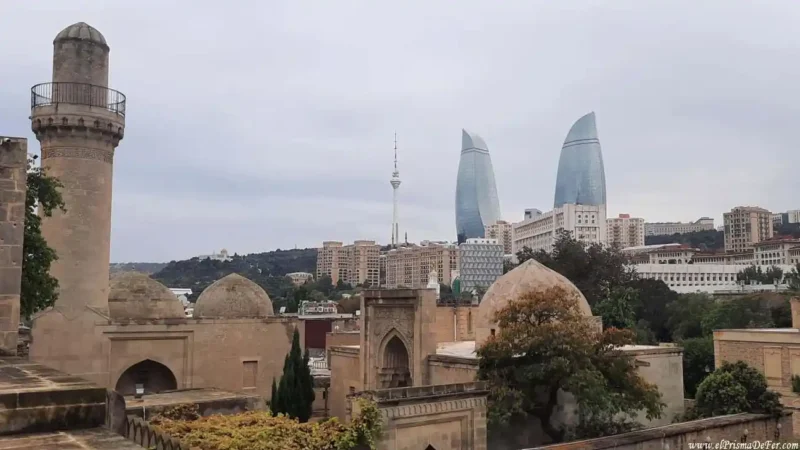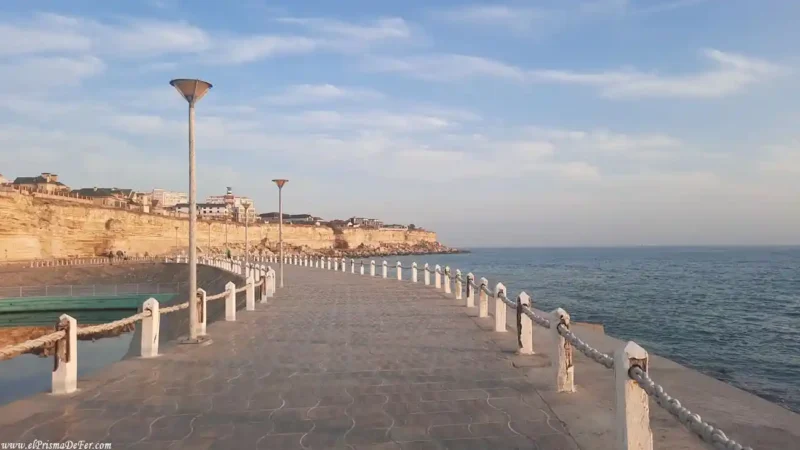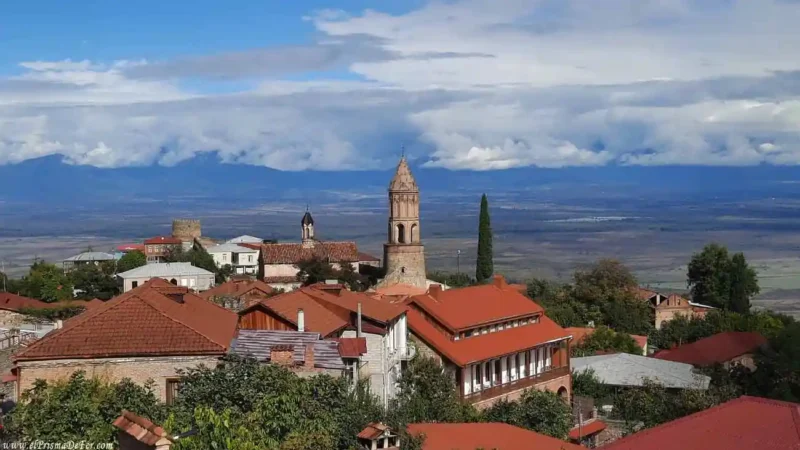I arrived in Azerbaijan eager to explore its landscapes, from the Caucasus Mountains to the Caspian Sea, but the weather wasn't on my side. Constant rain, gray days, and a cold that felt more intense than expected made my time in the country shorter than planned.
Even so, those few days were enough to discover a unique destination, where the modern and the ancient coexist at every turn. From the futuristic towers of Baku to the historic villages along the old Silk Road, Azerbaijan proves to be a meeting point of cultures and religions.
In this one-week itinerary, I'll tell you what I was able to visit, how I got around, and what I would have liked to include if the weather had allowed. If you're thinking of traveling to Azerbaijan, this guide can serve as a basis for creating your own route, adapting it to the time of year and the amount of time you have available.
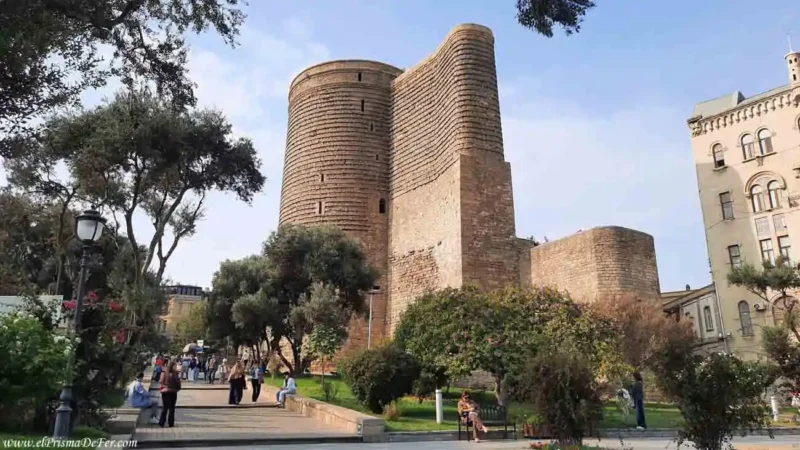
Table of Contents
Places worth including in your Azerbaijan itinerary
Although my time in the country was brief, I found that Azerbaijan has distinct regions, each with its own unique character. From the modernity of Baku to the villages nestled in the mountains, the country offers a blend of history, nature, and tradition.
Next, I'll tell you about some of the most recommended places to consider when planning your route.
Baku
Azerbaijan's capital is undoubtedly the best starting point. Baku combines modern skyscrapers with a historic center that preserves the essence of its Persian and Ottoman past.
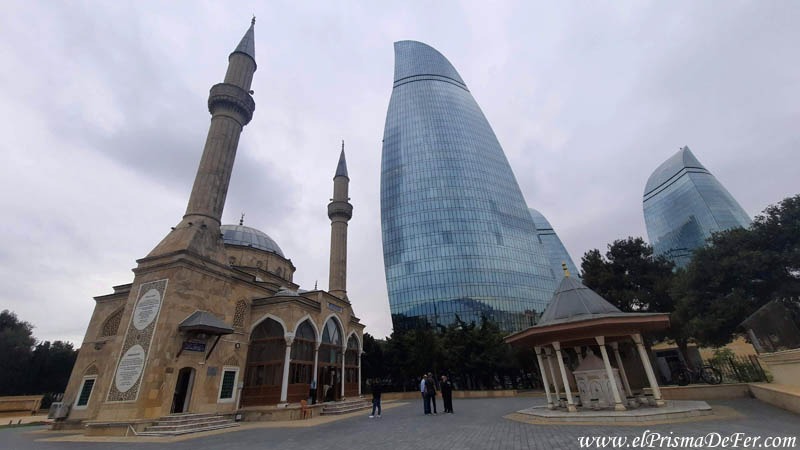
In the Old City (Icherisheher), a World Heritage Site, you can explore narrow streets, visit the Maiden Tower, one of the country's symbols, and the Shirvanshah Palace, an architectural gem from the 15th century.
Outside the city walls, the city transforms completely. The Flame Towers dominate the skyline, illuminated at night with the colors of the national flag. Caspian Boulevard (Baku Boulevard) is perfect for a stroll along the waterfront, lined with parks, cafes, and modern museums. And of course, the Heydar Aliyev Center, designed by Zaha Hadid, is a must-see for lovers of contemporary architecture.
Qobustan
Just over an hour from Baku, Qobustan National Park is one of the most fascinating places in the country.
Here you'll find more than 6,000 petroglyphs carved into the rock, dating back between 5,000 and 40,000 years. These figures depict hunting scenes, ritual dances, and boats, offering a unique window into the region's prehistoric past.
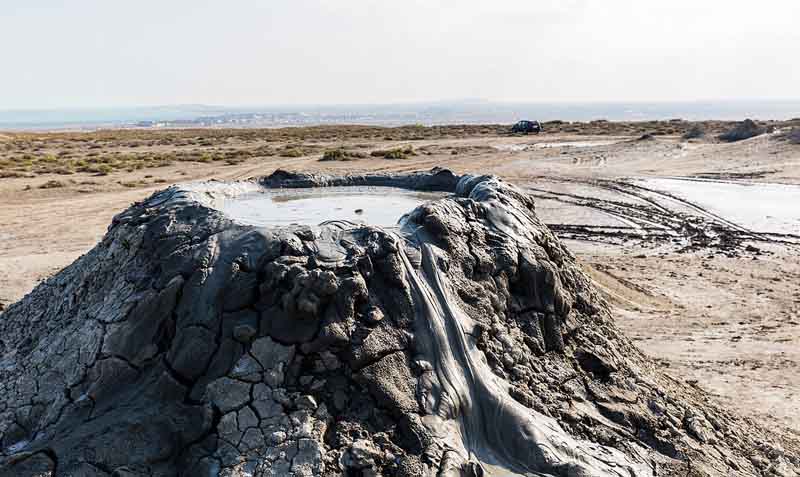
But Qobustán is not only notable for its history. Nearby are the mud volcanoes, a natural phenomenon that transforms the landscape into something almost lunar.
Azerbaijan boasts more than half of the world's mud volcanoes, and watching them slowly bubble up is a rare and mesmerizing experience. It makes a perfect half-day trip from Baku, especially if you're interested in geology or unusual landscapes.
Lahic
Nestled in the foothills of the Caucasus Mountains, the village of Lahic seems frozen in time. Its cobbled streets, stone houses, and wooden balconies create an atmosphere from another century.
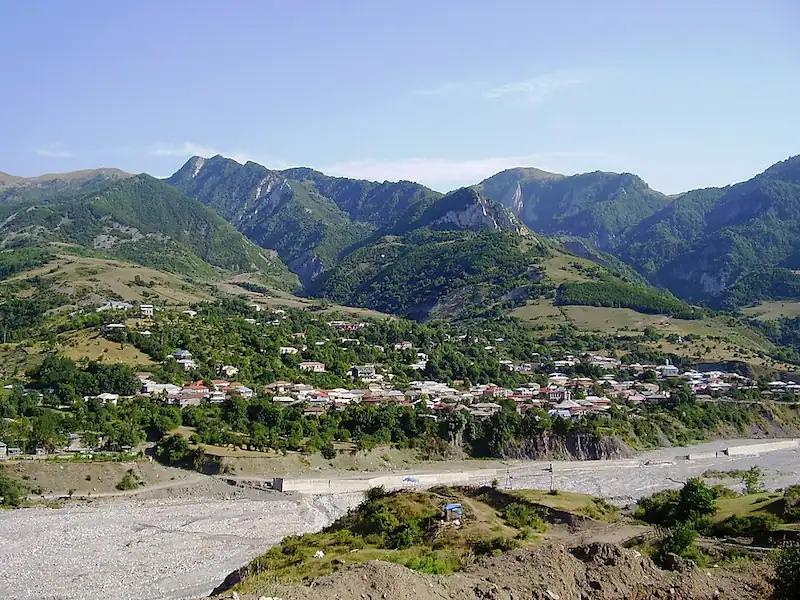
It is known for its copper craftsmanship: even today, blacksmiths work by hand in small family workshops, maintaining a tradition that dates back to the Persian Empire.
Besides its cultural value, Lahic is an excellent place to enjoy nature. The surrounding area is full of green valleys, mountains, and trails.
It is an ideal place for those seeking a more relaxed pace and an authentic glimpse into rural life in Azerbaijan.
Sheki
Considered one of the most beautiful cities in the country, Sheki was an important trading center on the ancient Silk Road.

Its main attraction is the Palace of the Khans, an 18th-century masterpiece decorated with colorful stained glass and detailed frescoes that are unparalleled in the region. The interior, with its geometric patterns and interplay of light, seems straight out of an oriental fairy tale.
Beyond the palace, Sheki retains its charm in the quiet streets, traditional bazaars and old caravanserais (merchants' inns) that now function as hotels or cafes.
Furthermore, it is an excellent starting point for exploring nearby villages such as Kish, home to a 1st-century Albanian church, considered one of the oldest in the Caucasus.
Qabala and Qakh
Both locations are perfect for nature lovers. Qabala is a very popular tourist town among locals, surrounded by mountains, forests and waterfalls. In summer, the weather is pleasant, and you can go hiking, visit Lake Nohur, or take the Tufandag cable car for views of the valley.
Qakh, on the other hand, is quieter and retains a rural atmosphere. Located near the Georgian border, it combines alpine landscapes with traditional villages. It's an excellent destination if you're looking to disconnect from the urban bustle and explore a less-visited part of the country.
Quba
Quba is one of the greenest and most mountainous regions in northern Azerbaijan, famous for its fruit trees, especially apples, and its landscapes of valleys and hills.
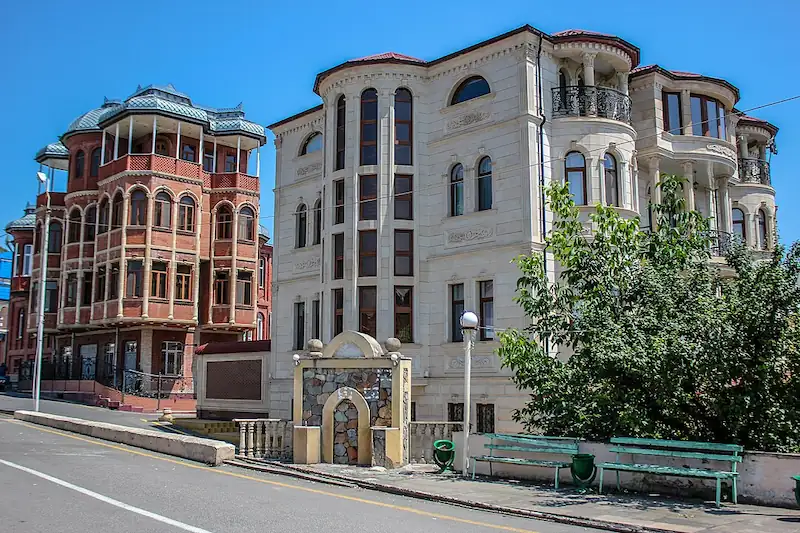
The city itself has a tranquil charm: local bazaars, small mosques, and streets where you can breathe in a rural atmosphere quite different from that of Baku. It's a good starting point for excursions to traditional villages and for sampling the local cuisine based on regional products.
In addition, Quba serves as a base for exploring the surrounding area: from here you can take routes to the most remote valleys, waterfalls and mountain trails.
Khinaliq (Xinaliq)
Khinaliq, also spelled Xinaliq or Khinalug, is one of the highest and oldest settlements in the Caucasus, located high in the northern mountains. Its stone houses and small population create a sense of isolation and almost untouched cultural preservation.
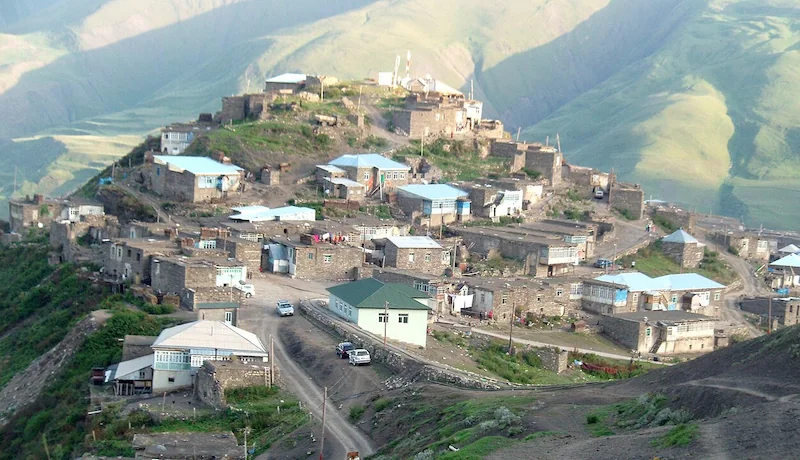
The village offers extraordinary panoramic views over valleys and peaks, and life there follows traditional rhythms that few tourists ever get to see.
Getting there involves mountain roads and sometimes stretches of dirt track, so access requires a bit of planning.
A stay of at least one night allows you to enjoy the silence, talk to locals and explore nearby trails.
Zaqatala
Zaqatala, in the far northwest of the country, is a border region with a strong mountain identity and an interesting cultural mix due to its proximity to Georgia and Russia.
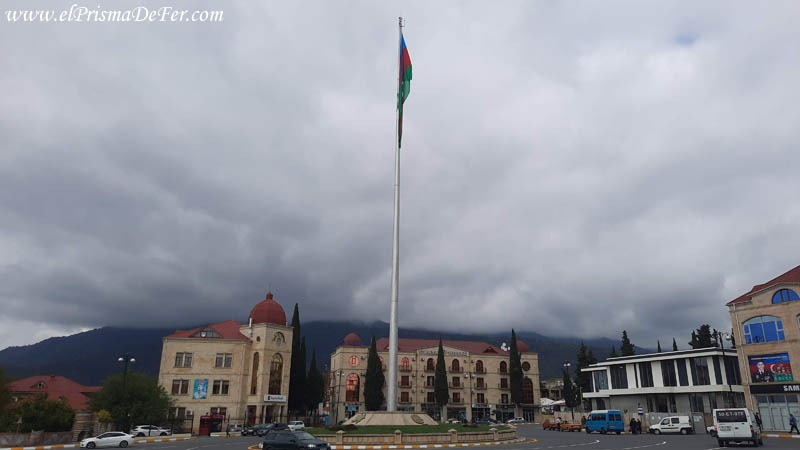
The town offers a large-town atmosphere: markets, cafes, and access to nearby natural areas ideal for hiking and wildlife viewing. It's a strategic base for those wanting to explore the Western Caucasus from a less touristy perspective.
The area surrounding Zaqatala includes forests, rivers, and small villages where rural life is maintained through agricultural and artisanal traditions.
It is an interesting alternative to extend a route through the north after visiting Quba or Sheki.
Ganya
Located in the west of the country, Ganya is the second largest city in Azerbaijan and one of the oldest in the Caucasus.
Unlike Baku, its atmosphere is calmer and more traditional, with a pace of life that better reflects the essence of inland Azerbaijan.
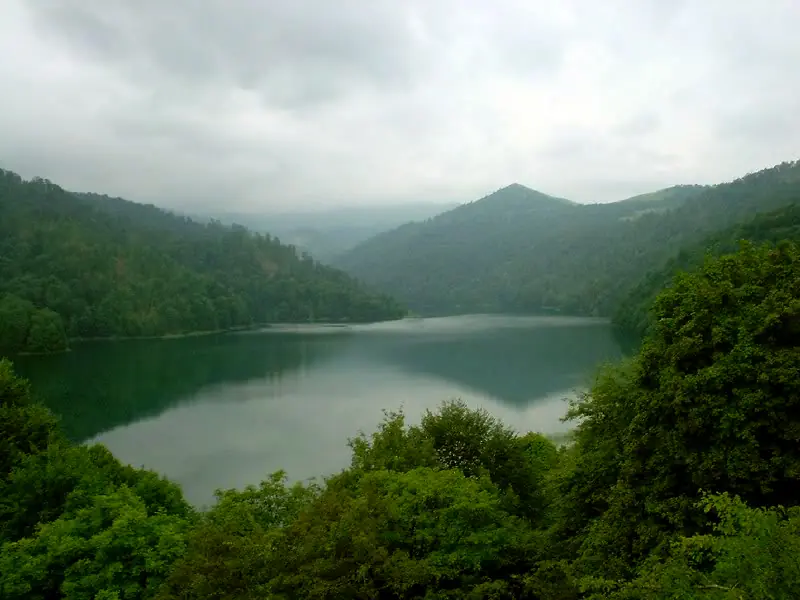
Furthermore, Ganja also has a rich cultural heritage: the poet Nizami Ganjavi, a key figure in medieval Persian literature, was born here, and his mausoleum is located on the outskirts.
You can also visit the Shah Abbas Mosque, one of the most important temples in the country, and the remains of the old medieval citadel.
Excursions to Goygol and Maralgol lakes also depart from Ganja, located in a spectacular natural environment within Goygol National Park, one of the scenic gems of western Azerbaijan.
Naftalan
One of the most curious places in Azerbaijan is Naftalan, known for its “medicinal oil”. For over a century, people have traveled here to soak in crude oil baths that are said to have therapeutic properties for the skin and joints.
Beyond the eccentricity of bathing in oil, the city also boasts museums dedicated to its history and wellness centers where modern medicine is blended with this ancient tradition.
What I liked most about Azerbaijan
Due to the short time I had in the country, the place I enjoyed the most, and the one that surprised me the most, was Baku. I arrived without knowing what I was going to find and it ended up being one of the most interesting capitals of the Caucasus and my entire Silk Road trip.
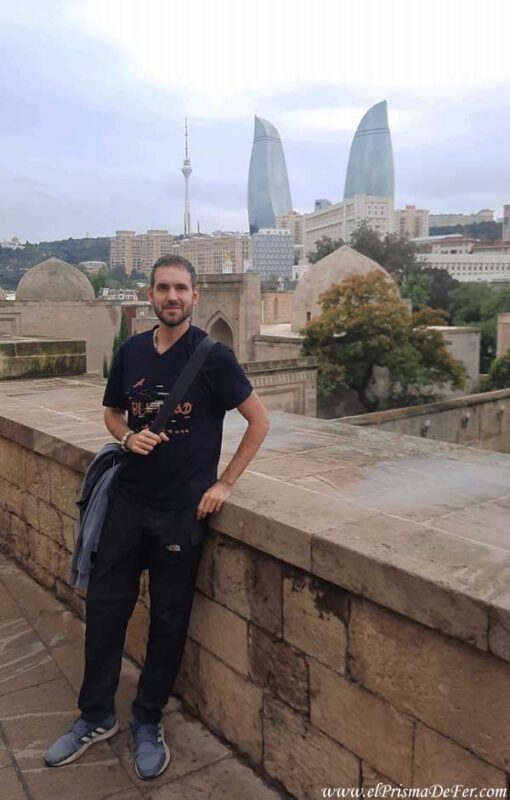
Its blend of old and new is truly remarkable: on one hand, the walled historic center with its stone alleyways, quiet courtyards and sea views; on the other, the imposing Flame Towers and avenues that seem straight out of a European city.
This contrast is evident when, in a single walk, you can go from a 15th-century mosque to a cultural center designed by Zaha Hadid, or from a traditional bazaar to a minimalist design restaurant overlooking the Caspian Sea.
Baku has energy, history, and a cosmopolitan feel I didn't expect to find. If you only have a few days in Azerbaijan, it's definitely the place to spend your time.
My one-week itinerary in Azerbaijan
I arrived in Azerbaijan by plane from Aktau, Kazakhstan, on a short flight of less than an hour.
In Baku I stayed for about four days, just enough to enjoy it without rushing. I walked its long coastal promenade, visited the History Museum, the Heydar Aliyev Center, and the viewpoints from where you can see the Flame Towers illuminated at night.
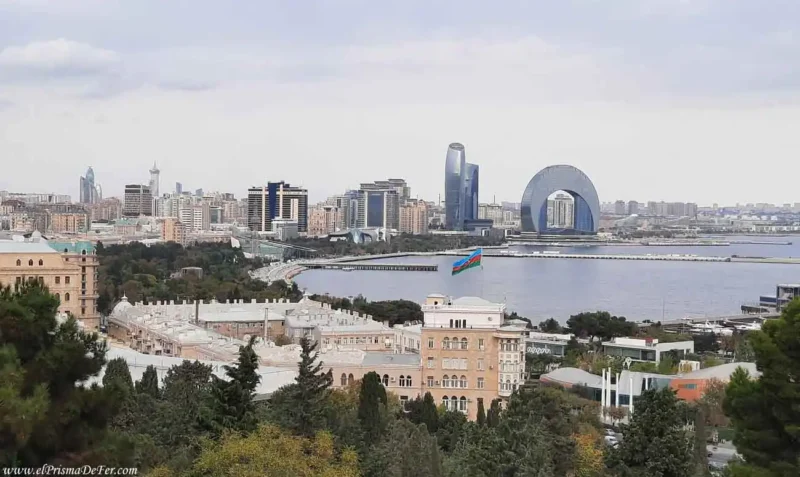
Days 1-4: What to do in Baku, Azerbaijan's European-style capital (coming soon)
I also enjoyed wandering through the Old City, with its quiet alleyways, hidden cafes and small artisan workshops.
After Baku I took a marshrutka (minibus) towards Sheki, a journey of several hours through valleys and a constantly changing landscape.

Days 5-6: What to see in Shaki, the Azerbaijani city where the Silk Road feels most alive (coming soon)
In Sheki I stayed two days, enough time to visit the Palace of the Khans, the old caravanserai, and take a trip to Kish, the nearby village that has a very old Albanian church.
It's a small city, but with a lot of character, ideal for those who enjoy quiet destinations with history.
My last stop in Azerbaijan was Zaqatala, a more rural and less touristy area, where I spent a day exploring the main attractions and enjoying the mountainous landscapes that announce the proximity to Georgia.

Day 7: What to see in Zaqatala, the last city before crossing to (coming soon)
The next day I crossed over to Signaghi, in Georgia, continuing my journey through the Caucasus.
It wasn't a long itinerary nor did it cover everything Azerbaijan has to offer, but it was a good introduction to the country.
I would have also loved to visit Quba and get to know the mountainous part of the country up close, especially the picturesque village of Khinaliq. However, the weather was uncooperative during my stay; the rain was constant, and travel north was discouraged due to the poor condition of a bridge on the main road.
Furthermore, with the fog and low clouds, much of the landscape that makes the area famous was barely visible. So I decided to leave that part for a future visit, when the weather allows me to enjoy it as it deserves.
Support The Prism of Fer!
Your support helps me continue creating free content on the blog. Thank you so much!


